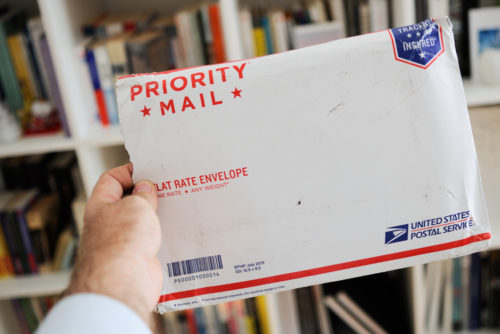A money order is similar to a check and is a way to send money from one party to another. Money orders are secure transactions and are safer ways to send money since recipients are required to provide identification before cashing them.
Senders pay money up front when requesting money orders, so these transactions are also guaranteed and can’t bounce due to lack of funds like checks can. Since money orders are a convenient and safe way to mail money, the United States Postal Service (USPS) provides money orders to customers at its office locations.
Table of Contents
How to Send a USPS Money Order
To request and send a money order with USPS, first decide on the amount you want to send. The maximum amount is $1,000 per money order. Visit a local post office and provide payment for the money order amount plus fees. USPS only accepts payment for money orders in the form of cash, a traveler’s check, or a debit card. Credit cards are not accepted.
Once you’ve paid, the clerk hands you the money order and a receipt to assist you with tracking. Fill out the money order and send it to your intended recipient. Keep the receipt so you have a record of the transaction. In addition to tracking the money order, you may also request to send your money order by mail with tracking. This allows you to check the location of the money order to ensure it reaches your intended recipient.
Filling Out a USPS Money Order
The USPS clerk may assist you in completing your money order. It’s important to ensure all fields are completed legibly and correctly before sending your money order. You’re responsible for filling in the following fields on the document:
- Recipient’s name;
- Sender’s name;
- Sender’s signature.
Ensure the amount field is already filled out and is correct. Use a blue or black ink pen to fill in the money order. Your recipient cannot cash the money order unless you’ve provided a valid signature as the sender.
Cashing in a USPS Money Order
If you received a USPS money order by mail, you can cash it at any USPS location for free. Most banks also cash money orders and there are money order processing agents that may also cash your money order for a fee. Bring government-issued identification with you when cashing your money order.
USPS Money Order Fees
When you request a money order with USPS, you must pay the money order amount and fees. Your money order amount determines the fee you’re responsible for paying. If your money order amount is between one cent and $500, you must pay a $1.25 fee. If the amount is between $501 and $1,000, you owe a $1.75 fee.
How to Avoid Money Scams
Scammers use fraudulent money orders to steal money from their victims. Avoid fraudulent money order scams by:
- Only sending money orders to individuals or businesses you know well and trust.
- Analyzing money orders that are sent to you for validity before cashing them.
- Never sending money orders with the promise to receive money in return.
If you suspect you were involved in a money order scam, contact your local police immediately. Provide as much information as possible about the potential scam to the National Consumers League’s Fraud Center and the Federal Trade Commission.
Replacement Money Orders
If you misplaced your USPS money order, you may order a replacement through a USPS office. You must pay a $6.25 processing fee for your new money order. If the money order was stolen, USPS begins an investigation. It may take up to 60 days to complete the investigation and conclude that a money order was stolen.
USPS offers money orders to customers because they’re a secure and simple way to send money. When you request a money order through USPS, you can track its status by mail and throughout the cashing process.
Image Source: https://depositphotos.com/





